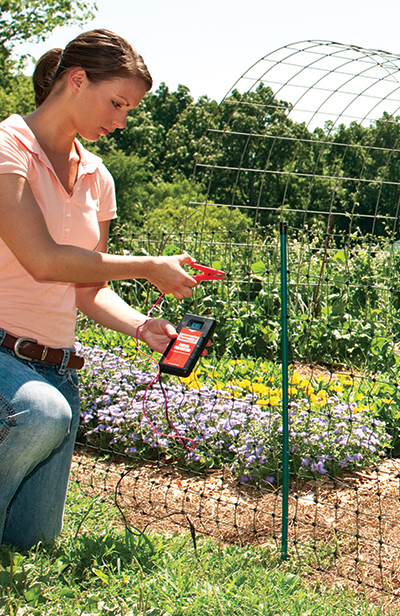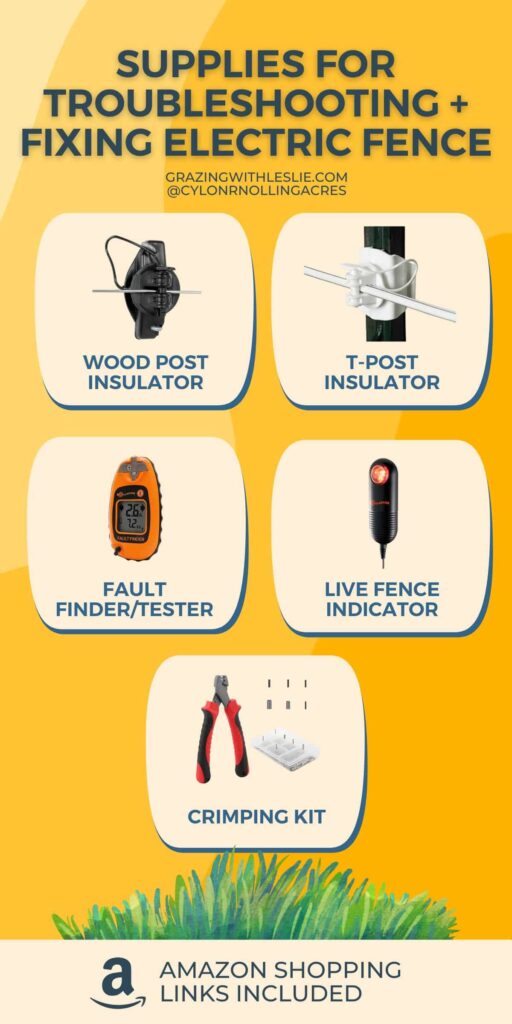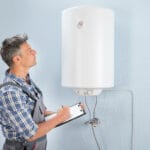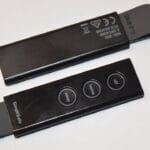Your electric fence is your property’s silent guardian, standing firm against unwanted intruders and ensuring peace of mind. But what happens when this vigilant protector suddenly fails?
The moment your electric fence stops working, it can leave you feeling exposed and anxious, questioning the security of your home or farm. You might start to wonder if it’s a simple fix or a sign of something more serious.
We’ll explore the potential reasons why your electric fence might not be working and provide you with straightforward solutions to get it back up and running. By the end of this read, you’ll feel equipped and confident to tackle the issue, restoring that crucial layer of security. Dive in to regain control over your safety.
Common Causes
When your electric fence stops working, it can be frustrating and potentially dangerous. Understanding the common causes of these issues can help you troubleshoot effectively and keep your property secure. Let’s dive into the most frequent culprits that might be causing your electric fence to malfunction.
Power Supply Issues
One of the most overlooked problems is power supply issues. Your electric fence needs a consistent flow of electricity to function. If the power supply is interrupted, the fence becomes useless. Imagine coming home to find your fence off due to a tripped breaker or unplugged power source. It’s always a good idea to check your power connections regularly. Are you sure your power source is reliable and secure?
Faulty Wiring
Faulty wiring can be a silent saboteur of electric fences. Wires can wear out over time or be damaged by external factors such as weather or animals. A few years ago, I discovered a rabbit had chewed through a section of my fence wiring, causing it to fail. Inspect your wiring frequently for any signs of wear or damage. Could faulty wiring be the hidden issue in your fence’s functionality?
Grounding Problems
Proper grounding is crucial for an electric fence to work effectively. Without it, the electrical current can’t flow properly, rendering the fence ineffective. Grounding rods must be securely buried and connected. If your soil is dry or sandy, grounding might be compromised. I once realized my grounding rods were not deep enough, affecting the fence’s performance. Have you checked if your grounding system is up to par?
Addressing these common causes can save you time and stress. Regular checks and maintenance can keep your electric fence running smoothly, ensuring your safety and peace of mind.

Credit: www.premier1supplies.com
Inspecting The Power Source
Finding your electric fence not working can be frustrating. One common culprit is the power source. Without a reliable power supply, your fence loses its effectiveness. Whether you’re using batteries, solar panels, or AC power, each requires careful inspection. Let’s dive into how you can ensure your power source is up to the mark.
Checking Battery Levels
Batteries can be sneaky. You might think they’re fine, but they could be on their last legs. Start by checking the battery voltage with a multimeter. If the voltage is low, it’s time for a replacement.
Don’t rely on your memory to track battery age. Use a label to note the installation date. This way, you can replace them before they fail unexpectedly.
Have you ever found your fence down because of dead batteries? It can be a costly mistake. Regular checks can save you from a surprise visit from wandering livestock.
Verifying Solar Panel Output
Solar panels are a fantastic option, but they need sunlight to work. Inspect the panels for dirt or debris. Even small particles can block sunlight and reduce efficiency.
Is the sky cloudy? Check the output during different times of the day. This will help you understand if the panels are working optimally or if shade is an issue.
Consider your location. Are the panels positioned to catch maximum sunlight? A small tweak in positioning can make a big difference.
Testing Ac Power Connections
AC power is reliable, but connections can falter. Ensure all plugs are securely connected and free of corrosion. A loose connection can disrupt the power supply.
Check the circuit breaker. Sometimes, a tripped breaker is the simple reason behind a non-functional fence.
Are your wires in good condition? Frayed wires can lead to power loss. Regular inspections can prevent these issues from escalating.
Inspecting your power source is not just about fixing a problem. It’s about ensuring your fence remains a dependable barrier. What insights have you gained from your own fence maintenance experience? Share your story, and help others keep their fences in top shape.
Assessing The Wiring
Troubleshooting an electric fence? Check the wiring first. Damaged or loose connections can stop the fence from working. Ensure wires are secure and intact for a functioning system.
Assessing the wiring of your electric fence is a crucial step when troubleshooting why it might not be working properly. The wiring acts as the backbone of your electric fence system, carrying the current that deters animals from crossing boundaries. If something is amiss with the wiring, your fence is essentially a boundary without power. You might recall a time when you tightened a loose wire and suddenly, the fence sprang back to life. That’s the power of proper wiring!Identifying Damaged Wires
Start by walking along the entire length of your fence. Look closely for any visible signs of damage such as cuts, breaks, or frays in the wire. Even a small nick can disrupt the current flow. Feel free to use a voltage tester if you suspect a section but can’t see any obvious damage. This tool can pinpoint where the current stops, helping you to narrow down the faulty area. Don’t forget the parts of the wire that are hidden by grass or debris. They often conceal the problems you’ve been searching for.Inspecting Connectors And Insulators
Check the connectors that join wire sections together. Over time, connectors can loosen or corrode, interrupting the flow of electricity. Tighten or replace any that appear faulty. Examine the insulators that hold wires in place and prevent them from grounding out on posts. Look for cracks or breaks and replace them as needed. Think about the last storm or high winds you experienced. They can shift or damage these components without you noticing immediately.Ensuring Proper Tension
Wire tension is vital for maintaining a consistent electric current. If the wire is too loose, it can sag and touch the ground or vegetation, causing it to short out. Use a tensioner to tighten any slack wires. This tool ensures that the wire is taut enough to prevent grounding while not overly straining the material. As you adjust, remember that a properly tensioned wire should have some give when pressed but spring back to its original position. Have you ever noticed how a guitar string behaves? That’s the tension you’re aiming for. Is your electric fence wiring up to par, or could it use a little TLC? Taking the time to assess and maintain your wiring will keep your fence effective and reliable, saving you future headaches.
Credit: grazingwithleslie.com
Evaluating Grounding Systems
Electric fences depend on proper grounding to function effectively. If the grounding system fails, the fence may not deliver a sufficient shock. This can render the electric fence ineffective at deterring animals. Evaluating grounding systems can help identify and fix these issues. Below, we explore key areas to assess.
Examining Ground Rods
Ground rods play a crucial role in grounding systems. They must be made of conductive materials like copper or galvanized steel. Ensure each rod is at least six feet long for optimal contact with the ground. Inspect for rust or corrosion. These can hinder conductivity. Replace any damaged rods immediately to maintain effectiveness.
Testing Soil Moisture Levels
Soil moisture affects the performance of electric fences. Dry soil does not conduct electricity well. Test the soil moisture levels around ground rods regularly. Moist soil enhances conductivity, leading to a more efficient electric fence. If the soil is dry, consider watering the area. This simple step can improve grounding performance.
Improving Grounding Techniques
Enhancing grounding techniques can boost electric fence performance. Use multiple ground rods spaced at least ten feet apart. This increases the grounding surface area. Connect rods with high-quality insulated wire. Avoid sharp bends in the wire to reduce resistance. Regularly check connections for tightness. Loose connections lead to poor grounding.
Testing The Fence Line
Struggling with an electric fence not working? Check connections and power supply. Inspect wires for breaks or damage.
Testing an electric fence line can be a bit like solving a mystery. You know there’s a problem, but finding it requires some detective work. Whether your fence is not delivering the shock it should or it’s not working at all, understanding how to test the fence line is crucial. This process can help you identify the root cause and get your electric fence back in optimal condition. Let’s dive into some practical steps to identify common issues.Using A Voltage Tester
A voltage tester is your best friend when it comes to diagnosing electric fence issues. These handy devices allow you to check whether the fence is receiving enough power. Start by testing the voltage at the energizer. If the voltage is low, the problem may be with the power supply or the energizer itself. Move along the fence line, testing at regular intervals. If you notice a drop in voltage at a particular section, you’ve likely found a problem spot.Detecting Short Circuits
Short circuits are a common culprit behind a malfunctioning electric fence. They occur when the electric current finds an easier path to the ground than through the fence wire. Inspect the fence line carefully. Look for any wires touching metal posts or other conductive materials. Use your voltage tester again. If the voltage suddenly drops, a short circuit could be the reason. Fixing these issues can often involve re-insulating wires or repositioning them away from contact points.Identifying Vegetation Interference
Vegetation can also play a sneaky role in your fence’s performance. Overgrown grass or branches touching the fence can sap the power. Regularly walk the fence line, especially after storms or heavy winds. Check for any plants or branches leaning on or touching the wires. Trim back any vegetation that makes contact with the fence. This simple maintenance can significantly improve the fence’s efficiency. Have you ever noticed how a simple tool like a voltage tester can solve a complex problem? Or how trimming a few branches can restore your fence’s power? These are small yet powerful actions you can take. They ensure your electric fence is functioning properly, keeping your property secure. What’s your next step in maintaining your electric fence?
Credit: www.gallagherfence.net
Upgrading Components
Experiencing issues with your electric fence? Upgrading components might solve the problem. Ensure your system functions efficiently by replacing outdated parts.
Upgrading components of your electric fence can dramatically improve its effectiveness and longevity. If your fence isn’t working as it should, the problem might lie in outdated or low-quality parts. By investing in better components, you can ensure your fence remains a reliable barrier for your property. Let’s dive into the specifics of what you can do.Choosing Quality Insulators
Insulators play a crucial role in preventing electrical shorts. Choose insulators made from high-grade materials like porcelain or UV-stabilized plastic. Cheap insulators might save you money upfront but can degrade quickly in harsh weather, leading to failures. My neighbor once faced this issue; upgrading to quality insulators solved his problem overnight. What kind of environment does your fence face? Consider this when selecting insulators. Weather-resistant options are key for areas with heavy rainfall or intense sunlight.Selecting Durable Wires
The wire is the backbone of your electric fence. Opt for galvanized or stainless steel wires for durability and conductivity. Thicker wires can handle more voltage and last longer. A friend of mine switched to thicker wires and noticed immediate improvement in power delivery. Have you ever thought about how often your fence needs maintenance? Durable wires reduce the need for frequent repairs, saving you time and effort.Enhancing Energizers
Energizers are the heart of your electric fence. A powerful energizer ensures a consistent charge throughout the fence line. Older energizers might not efficiently power long fences. Upgrading to a modern, solar-powered model can provide better energy efficiency. How long is your fence? Match the energizer’s capacity to your fence’s length to avoid underperformance or energy wastage. Upgrading these components might seem like an investment, but the peace of mind it provides is well worth it. Have you considered which component of your electric fence could use an upgrade?Regular Maintenance Tips
Ensure your electric fence remains effective with regular maintenance. Check for broken wires and clear vegetation. Test the voltage often to confirm proper operation.
Keeping your electric fence in top condition is crucial for ensuring its effectiveness and longevity. Regular maintenance can save you time and money, and more importantly, keep your property secure. Whether you’re a seasoned farmer or a novice homeowner, understanding the basics of electric fence maintenance is essential. Let’s dive into some practical tips that will help you keep your electric fence working smoothly.Routine Inspections
Routine inspections are the backbone of electric fence maintenance. Regularly walk along your fence line to check for visible damage or abnormalities. Look for broken wires, leaning posts, or vegetation touching the fence. These issues can disrupt the electric current, making your fence ineffective. I remember the time I ignored a small branch leaning on my fence. It caused a complete power cut, leading to an unexpected livestock escape. Make it a habit to inspect your fence weekly, especially if you live in an area with frequent storms or high winds.Seasonal Adjustments
Seasonal changes can affect your electric fence’s performance. During winter, snow and ice can weigh down wires, while summer heat can cause them to sag. Adjust your fence tension as needed. In the spring, ensure that new growth isn’t interfering with the electric flow. Think of your fence as a living entity that changes with the seasons. This mindset will help you stay proactive in maintaining its function. Are you prepared to make these adjustments as the seasons change?Preventative Measures
Preventative measures are your best defense against unexpected fence failures. Install lightning diverters to protect your fence from storms. Use quality insulators to prevent energy loss, and regularly check your energizer to ensure it’s functioning correctly. Keeping a small toolkit handy can help you address minor repairs immediately. It’s also wise to keep spare parts like insulators, wire, and posts. This way, you’re ready for quick fixes, reducing downtime and maintaining security. Are you equipped to handle sudden fence issues? Regular maintenance doesn’t just prevent problems; it enhances the reliability of your electric fence. By adopting these tips, you safeguard your investment and ensure peace of mind. Remember, the key is consistent, small efforts that lead to big results.Frequently Asked Questions
Why Is My Electric Fence Not Working?
Check for breaks in the wire. Ensure connections are secure. Inspect the energizer for issues. It’s often simple fixes.
How Do I Test An Electric Fence?
Use a voltage tester. Check readings at various points. Ensure consistent voltage flow. Follow safety precautions when testing.
What Causes Electric Fence Power Loss?
Poor connections can cause power loss. Check for vegetation touching the wire. Also, inspect for broken insulators.
How Do I Maintain My Electric Fence?
Regularly check for damage. Clear vegetation around the fence. Ensure connections are tight. Perform routine voltage tests.
Can Weather Affect Electric Fence Performance?
Yes, rain and wind can impact performance. Wet weather might cause shorts. Extreme cold can affect battery efficiency.
Conclusion
Fixing an electric fence can be challenging. Start with simple checks. Ensure power supply is stable. Inspect wires for breaks or damage. Look for faulty connections. Keep vegetation away from wires. Regular maintenance helps prevent issues. Consider expert help if needed.
Proper care ensures your fence works well. Troubleshooting boosts security and peace of mind. Stay proactive and your fence will protect effectively. Remember, a working fence is key. You can overcome common problems with patience and diligence. Your efforts will be worthwhile.
Happy fencing!





